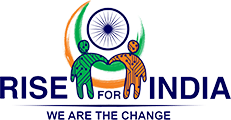Every passing year is rewriting the glory of India as a nation of great potential, a young, vibrant and emerging economy, a source of human resources to the world. Since 1991, though unhurriedly, India has moved far ahead but a lot is yet to be done. Right from social evils to natural resources, India is still not in an ideal position to call itself a prosperous nation. To mark 2016 as a year of marvellous success and to continue efforts towards the goal of establishing itself among developed & peaceful nations, I believe that the following five major concerns are needed to be addressed at a greater pace.
Quality of Education and Unemployment
India has evolved a significant change in terms of ‘quantity’ of education. “Since 2000, when countries committed themselves to the global education goals, India has reduced its out of school children by over 90% and Universal Primary Education has been achieved.” according to UNESCO.
But the ‘quality’ of education lags far behind, about 69 percent of unemployed Indians are educated but lack adequate skills, according to the Confederation of Indian Industry. As per the Pearson Voice of Teacher Survey, 75% teachers have called for restructuring of course curriculum in collaboration with industry to provide better employment opportunities to students. Outdated learning and teaching practices, lack of career planning and exposure results into the education without actual learning of how to get things done, without complex problem-solving skills, without knowing how to put their theoretical education into practice.
Gender Inequality and Rapes
Gender discrimination continues to be an enormous problem within Indian society. Gender inequality persists in India despite of economic growth and modernisation. In 2014, India ranked 127 out of 146 countries in UNDP’s Gender Inequality Index with a value of 0.563. Though PM Modi led government has launched several commendable schemes to save and educate the girl child but that would not work unless people stop treating girl-child as inferior.
The situation is worsening due to increase in number of rape cases every year. As per National Crime Records Bureau, there is an increase of 900% registered rape cases in India over the past 40 years. In every 20 minutes, a woman is raped. One out every three victims is under 18 & one out of every ten victims is under 14. There is a higher probability that only one out of 100 rapes is reported.
Health & Infrastructure
India owes 21% of the world’s disease burden and unacceptably high rates of maternal and infant mortality. It is horribly worsened by the burden of infectious diseases and a dramatic rise in non-communicable diseases like cancer, cardiovascular diseases, diabetes, and chronic respiratory conditions. It accounts approximately more than half of all deaths. It is estimated that over 63 million Indians are affected by these diseases in 2012 alone. India also lacks in adequate infrastructure, according to WHO recommendations there should be at least 3.5 beds for 1000 people, but there are only 1.3 beds in India for a population of that size and just one doctor per 1700 people. According to a study conducted by WEF in collaboration with the Harvard School of Public Health, India stands to lose $6.15 trillion due to non-communicable diseases and mental disorders by 2030.
Poverty and Rising Social Inequality
India is home of a third of the world’s poor and hungry. One out of four people in India is hungry and every other child is suffering from malnutrition. The 2010 Multidimensional Poverty Index showed that 8 states in India account for more poor people than a combined of 26 poorest countries in Africa. In 2011, India was ranked 73rd out of 88 countries listed in the annual Global Hunger Index, six places down from the previous year.
On the other hand, India also houses the second largest number of affluent people in the world, with three million households having over $100,000 of investable funds. The gap between rich and poor is continuously widening. Adequate efforts are not made to uplift poor population, and this is worsening by inflation and corruption. If judged by the median developing country poverty line of two dollars a day on purchasing power parity, more than 80 per cent rural and just below 70 per cent urban inhabitants in India continue to be poor
Water Scarcity and Increasing Pollution
Natural resources in India are strained by its continuously increasing population. It has only 1,000 cubic meters of water per citizen, and it is quite less compared to the ‘water-stress’ level of 1,700 cubic meters of water per person.
According to a report by WHO, 97 million Indian citizens don’t get clean water. The World Bank estimates that 21% of communicable diseases in India are related to unsafe water, and it causes more than 1,600 deaths every day.
It is followed by pollution as 13 out of top 20 most polluted cities are in India. Air pollution reduces life expectancy by almost 3.2 years for over 660 million Indians who reside in cities. The impact of rising toxins in the air is clearly visible as air pollution ranked sixth in top reasons that cause death in India, according to a Lancet study.


